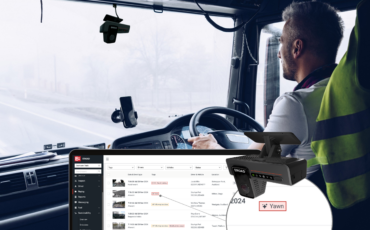Getting drivers on board with privacy settings
Getting drivers on board with privacy settings
An EROAD telematics solution provides fleet managers and drivers with key insights into many areas regarding how fleets are operating. But like any system, the most fallible component is the human beings operating it.
It is critical that drivers always indicate correctly whether their trip in a work vehicle is for work purposes or their personal use. This will i ensure only the right trips are recorded by the telematics system.
All drivers will be given training, advice and support
Like any new system, drivers will need training, advice and support to understand what telematics is, how it affects them and what they need to do. EROAD’s driver-facing touchscreens are simple and intuitive for drivers to log into and select “work” or “private” mode.
Drivers need to understand the importance of telematics for their own safety, performance and overall success of vehicle operations. Only trips marked as “work” will be recorded for location, speed, heavy braking, sharp acceleration or cornering and excessive idling.
Telematics encourages good driver behaviour
When trips are in “work” mode, telematics gives drivers instant feedback on their driving through the touchscreen. Good driving habits developed through the EROAD solution should transfer over to driving behavior while in “private” mode or other vehicles without a telematics system. Good driving behaviour simply becomes a habit.
Easy to use touch screen shows privacy mode
The driver facing touchscreen displays “work” or “private” mode to remind drivers what type of trip they entered into the system.
If drivers have forgotten to change the trip mode, they can pull over and stop to change the setting. Make sure drivers are vigilant about selecting the correct trip mode.

Drivers are not to be under surveillance on their own trips
Workplace surveillance laws in New South Wales and Australian Capital Territory do not permit employers to track drivers who are driving a vehicle while not at work for the employer.
It is important that drivers remember to select the “private” mode for personal trips, so the system does not collect their location and other driving behaviour data. This allows drivers to maintain their privacy even if they are driving a company liveried vehicle in their own time.

Creates a culture of honesty and transparency
The ability of drivers to effectively turn off tracking for personal journeys ensures a culture of honesty and transparency. Knowing that they can select Private Mode gives drivers a sense of autonomy and a greater sense of ease in using telematics technology.












